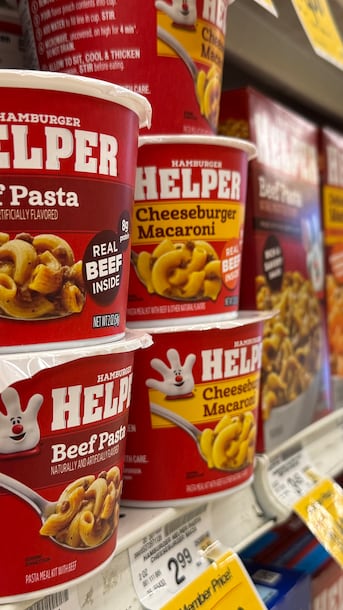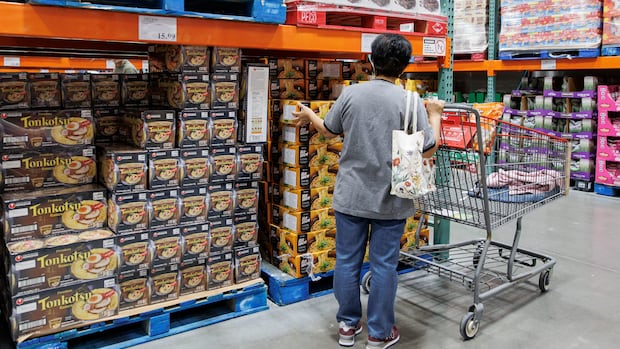Canada’s annual inflation rate rose to 2.4 per cent in September, as grocery prices climbed and gas and travel tour prices fell at a slower pace, Statistics Canada said Tuesday.
Economists were expecting the headline number to reach 2.2 per cent. When excluding gas, the annual inflation rate increased to 2.6 per cent, the data agency said.
Shoppers paid four per cent more at the grocery store in September compared to the same period last year, largely driven by pricier fresh vegetables and sugary goods.
Grocery inflation has generally trended upward since April, Statistics Canada said. Fresh and frozen beef and coffee have contributed to the higher rate, partly because they’re both in low supply.
WATCH | Are you struggling with high food prices?:
Are you making struggle meals to help save money?
People are trying to find different ways to deal with inflation. One way to handle the rising cost of groceries? Enter the struggle meal. CBC’s Puneet Nijjar breaks it down.
“Food prices are volatile in Canada,” said Nathan Janzen, assistant chief economist at RBC, in an interview with CBC News. “So I wouldn’t read too much into the one-month change, but food price growth has been sticky, and I don’t know that we can blame it all on tariffs.
“This has kind of been a phenomenon that we’ve seen in recent years, where food price growth has been generally higher than the overall rate of inflation.”
Rental prices, too, are still driving inflation upward, having ticked back up to 4.8 per cent year-over-year. Shelter prices are the biggest component in the inflation basket.
Meanwhile, gas prices fell at a slower pace in September — to 4.1 per cent on a yearly basis — compared to the same period last year.
Last year, prices fell due to a drop in crude oil prices that emerged from concerns over weaker economic growth in the U.S. and China; last month, refinery disruptions in the U.S. and Canada pushed petrol prices higher, according to Statistics Canada.
The cost of travel tours also fell at a slower pace year-over-year in September.
While prices usually decline on a monthly basis during this time of the year, prices rose to 4.6 per cent from August, as major events in the U.S. and Europe made hotels more expensive.
The September inflation report is the final data release ahead of the Bank of Canada’s next interest rate meeting on Oct. 29.
Janzen said inflation is still within the Bank of Canada’s target range of one to three per cent, but it’s now above the midpoint of that range, which is usually the sweet spot the bank is aiming for.
“If you’re the central bank, you’re not just looking at what inflation is right now,” said Janzen.
“You’re looking at what you think it will be in the future. And most of those forward-looking indicators would still say that inflation should slow. It would be more likely to slow than rise going forward.”
The central bank tends to focus on its preferred measures of core inflation, which strip away volatile sectors like gas from the overall number. Two of those measures are still lingering above three per cent, surpassing the central bank’s inflation target range.
“Suffice it to say, this will make the Bank of Canada’s decision a bit more interesting next week than previously expected — markets had been all but baking in a rate cut,” wrote Douglas Porter, chief economist at Bank of Montreal, in a note to clients.
BMO isn’t convinced that the central bank will deliver another cut next week, Porter said.
Stephen Brown, deputy chief North America economist at Capital Economics, said in a note to clients that the latest inflation release, paired with a stronger-than-expected jobs report for September, should tamp down rate cut expectations for the end of the month.
But he said Capital Economics is “still leaning toward another rate cut” after Bank of Canada governor Tiff Macklem’s comments citing concern about a soft jobs market last week.

